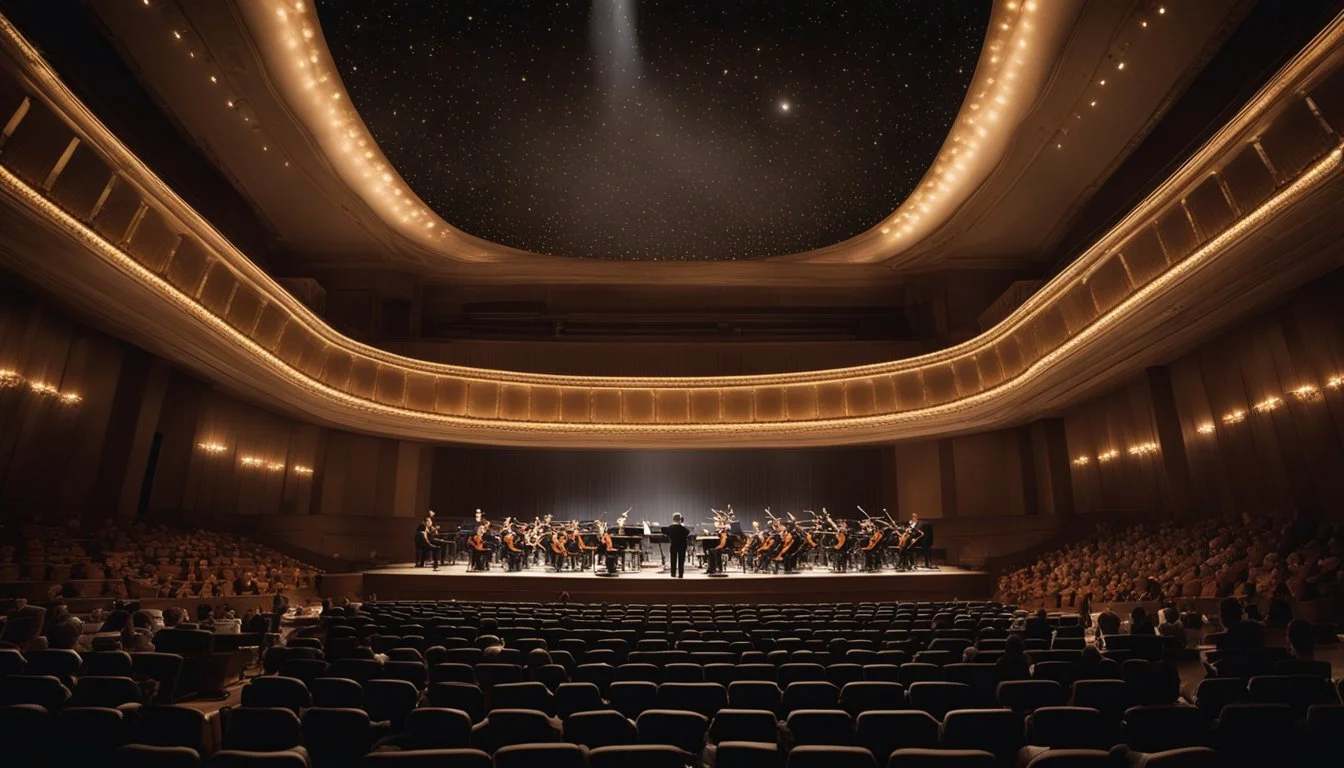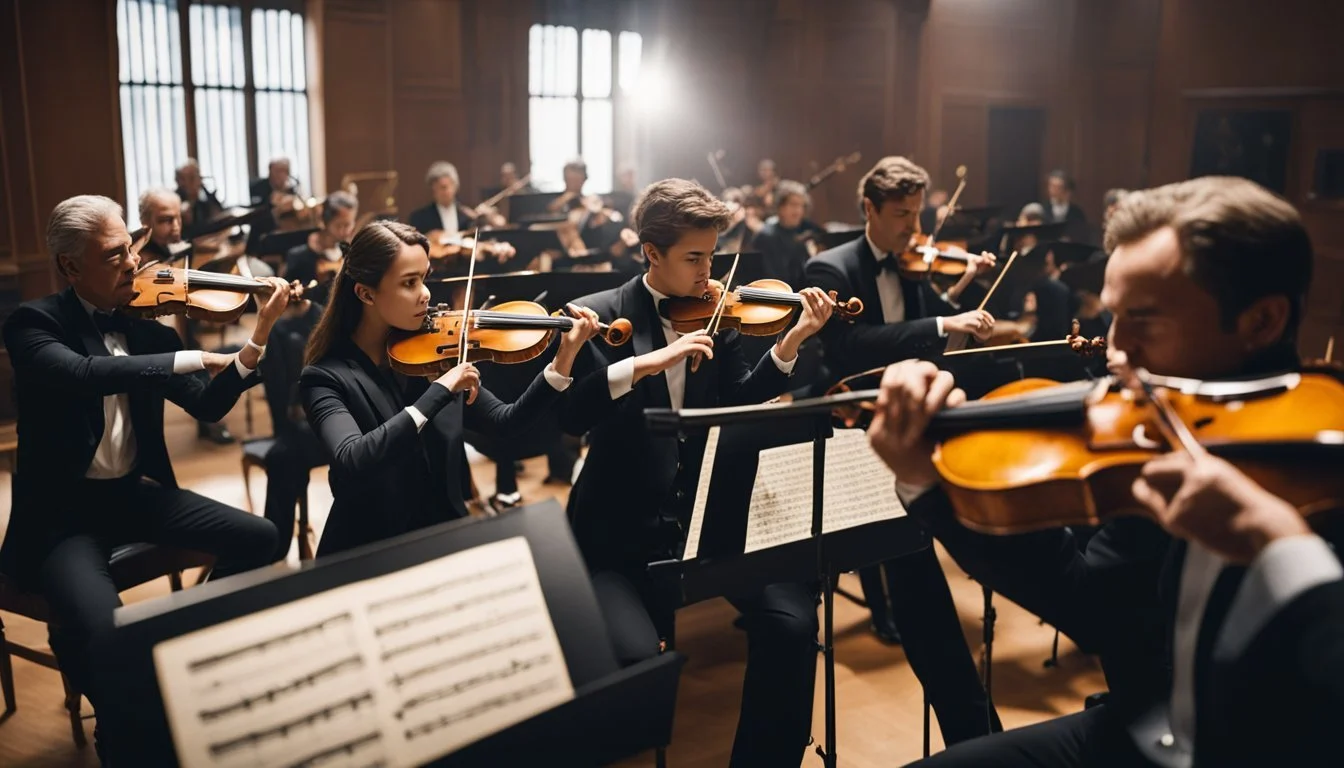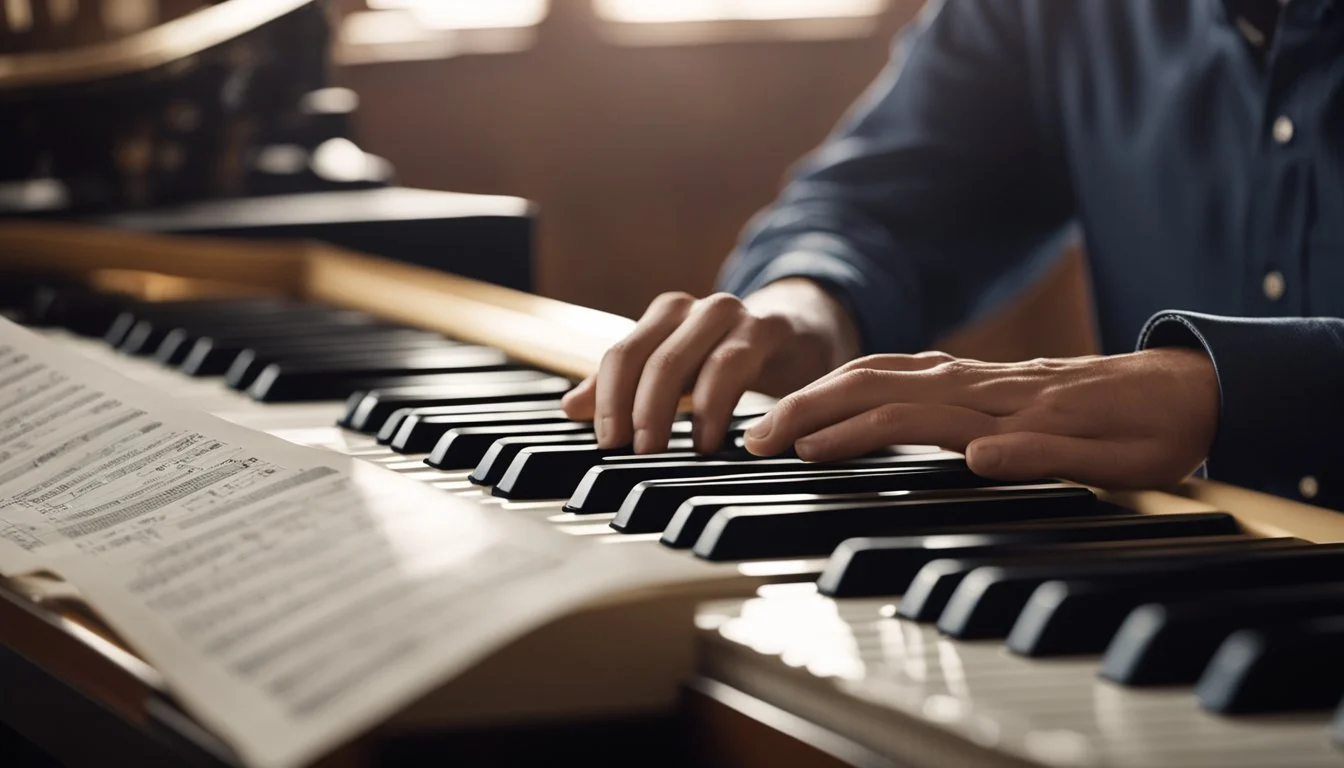The Role of Music in Filmmaking
Enhancing Storytelling Through Sound
In the intricate world of filmmaking, music holds a pivotal role in shaping the emotional and thematic landscape of a movie. The strategic use of a film score not only enhances the storytelling but also deeply influences the audience's emotional engagement. A well-crafted score can transform a scene from ordinary to unforgettable, resonating with viewers long after the credits roll.
Music in cinema does more than complement the visuals; it adds layers to character development and narrative arcs. Leitmotifs, recurring musical themes associated with specific characters or ideas, provide insight into a character's journey and can foreshadow plot twists, thereby enriching the viewer's experience.
The ability of music to evoke emotions, set the atmosphere, and guide the audience through the highs and lows of the story is unparalleled. Whether it's the suspenseful beats during a chase scene or the melancholic strains accompanying a poignant moment, the film score is integral to the cinematic experience, creating a more immersive and impactful narrative.
Historical Evolution of Film Scoring
Film scoring has continuously evolved, adapting to technological advancements and artistic demands. From live piano accompaniments in silent films to full orchestral scores and modern electronic compositions, each era brought unique changes and innovations.
Early Silent Film Music Practices
During the silent film era, music was performed live in theaters to accompany the visuals. Pianists, organists, and sometimes small orchestras played pieces that were often improvised or taken from classical music.
Spotting Sheets were used to synchronize music with on-screen action. These early practices laid the foundations for more structured film scores. Music directors would select or even compose pieces that matched the mood and pacing of the scenes.
Rise of Orchestral Scoring in Talkies
The introduction of synchronized sound in the late 1920s revolutionized film scoring. One of the earliest comprehensive film scores was Max Steiner’s work for King Kong (1933). Steiner used a full symphony orchestra to create a dramatic and emotional score, setting a new standard.
This era saw composers like Erich Wolfgang Korngold and Alfred Newman emerge. Their compositions used leitmotifs, which are recurring themes associated with characters or ideas. The use of a full orchestra became the norm, providing a richer and more immersive cinematic experience.
Modern Film Scoring Techniques
Modern film scoring incorporates various techniques and technologies. Electronic and digital instruments are now commonplace, alongside traditional orchestration. Composers like Hans Zimmer and John Williams have pushed boundaries by combining orchestral and electronic elements.
Today's composers also utilize advanced software for composition and synchronization. Sampling, the use of pre-recorded sounds, allows for complex and layered scores. This era has seen greater experimentation, leading to diverse soundscapes that enhance the storytelling in innovative ways.
The Role of Music in Storytelling
Music plays a pivotal role in storytelling by enhancing the narrative and deepening emotional engagement. It underscores key moments, builds atmosphere, and guides the audience's emotional journey through the film.
Supporting Narrative Structures
Music is essential in anchoring the story's structure, reinforcing transitions between scenes, and highlighting pivotal moments. Film scores often introduce leitmotifs, recurring themes associated with particular characters or ideas, which help to subtly cue the audience into shifts in the narrative.
For example, a heroic theme might signal the protagonist's arrival, instilling a sense of courage and anticipation. Conversely, a dissonant melody might foreshadow impending danger or conflict. These musical cues support the storytelling by making the narrative arc more coherent and emotionally resonant.
Additionally, music helps to establish the setting and time period of a film, creating an immersive environment. A well-crafted score can evoke a specific historical era or cultural context, enhancing the believability and depth of the story.
Creating Emotional Depth
The emotional impact of a scene is often magnified by the accompanying music. Different musical elements, such as tempo, key, and instrumentation, work together to elicit specific emotions. A slow, minor key composition can evoke sadness or introspection, while an upbeat, major key piece can amplify feelings of joy and triumph.
Composers use these techniques to align the audience's emotions with the narrative. For instance, poignant music in a dramatic scene intensifies the viewer's empathy for the characters. In action sequences, fast-paced scoring can elevate suspense and excitement, driving the audience's adrenaline and engagement.
Moreover, music can transform a scene by adding layers of meaning. A haunting melody in a seemingly mundane moment can hint at deeper, unseen emotions or future plot developments. Thus, music not only reflects but also shapes the emotional landscape of a film.
Music Genres and Their Impact on Film
Different music genres can shape how audiences perceive emotions and themes in a film. This section explores the specific roles of classical music and popular/world music in cinematic scores.
Classical Contributions to Cinematic Scores
Classical music has long been a cornerstone of film scoring. Its complex compositions provide a rich, emotional tapestry that can elevate dramatic scenes. Composers like John Williams and Hans Zimmer have used classical elements to create some of the most iconic film scores.
For example, the use of orchestral arrangements in "Star Wars" and "Pirates of the Caribbean" adds grandiosity and depth. These scores can underscore a character's journey or transform an action sequence into an epic experience.
Classical music’s timeless qualities make it versatile for different genres—from historical dramas to science fiction. Its adaptability and emotional range make it essential in conveying a film's emotional and thematic core.
Influence of Popular and World Music
Popular and world music inject contemporary sensibilities and cultural nuances into film. This can be seen in movies like "The Great Gatsby", which uses jazz to set the 1920s mood, or "Black Panther", which melds African rhythms with modern beats.
Popular music can also capture the zeitgeist or highlight a movie’s setting. In "Guardians of the Galaxy", classic pop tunes from the '70s and '80s establish a unique, nostalgic atmosphere that enhances the storytelling.
World music enriches films by adding authentic cultural elements. For instance, "Slumdog Millionaire" features Indian music to deepen the narrative's cultural context. By incorporating diverse musical traditions, filmmakers can create a more immersive and emotionally resonant experience for the audience.
The Composer's Toolbox
A film composer employs a variety of tools and techniques to convey emotions and themes effectively. These tools include the careful selection of musical elements and motifs, instrumentation and orchestration choices, and leveraging technological advancements in composing.
Musical Elements and Motifs
Musical elements such as melody, harmony, rhythm, and dynamics are fundamental in crafting a film score. Composers often create motifs—short, recurring musical phrases—associated with characters, themes, or emotions.
These motifs help in building a musical narrative.
For example, leitmotifs, a concept popularized by Richard Wagner, are extensively used to represent characters or ideas.
Variations in tempo and key changes can also evoke specific moods or transitions, guiding the audience's emotional response throughout the film.
Instrumentation and Orchestration Choices
Selecting the right instruments and orchestrating them effectively is crucial for setting the tone. Different instruments evoke different emotions; for instance, strings are often used for romance or melancholy, while brass can signify power or heroism.
Orchestration involves arranging these instruments to ensure balance and coherence.
A composer must decide whether to use a full orchestra, a smaller ensemble, or even electronic instruments.
Sometimes, a combination of traditional and modern instruments can create a unique sound that perfectly fits a film's atmosphere. Percussion is often used to build tension, while woodwinds can add a layer of delicacy or nostalgia.
Technological Advancements in Composing
Technology has revolutionized film scoring. Digital Audio Workstations (DAWs) like Logic Pro and Cubase allow composers to create detailed mock-ups before the actual recording.
Sample libraries provide high-quality recordings of real instruments, making it possible to experiment with different sounds without needing a physical orchestra.
Software such as MIDI controllers and synthesizers also enable innovative sound designs, expanding the creative possibilities.
Additionally, advancements in sound mixing and mastering ensure that the final score is polished, balanced, and aligned with the film's audio landscape.
These tools empower composers to fulfill their artistic vision with precision and creativity.
The Filmmaker-Composer Collaboration
Successful film scoring relies heavily on the interaction between directors and composers. This collaboration ensures that music enhances the film's narrative, mood, and emotional impact.
Communicating the Vision
Filmmakers and composers begin their collaboration by discussing the film's vision. Directors share storyboards, scripts, and rough cuts to help composers grasp the narrative's nuances. This dialogue allows both parties to identify the emotional tone and thematic elements that the music will need to underscore.
Regular meetings and adjustments ensure alignment. Directors may describe scenes in emotional terms or provide reference tracks, aiding composers in pinpointing the desired mood. Clear, ongoing communication is key to successful collaboration, ensuring the music seamlessly integrates with the visual and narrative elements.
The Scoring Process
Once the vision is clear, composers move to the scoring process. This phase involves writing, orchestrating, and recording the music. The composer crafts themes and motifs that reflect the film’s emotional arc and character development. This is a meticulous process, balancing technical skill with creative expression.
After initial drafts, the composer presents cues for feedback. Changes are made based on the director's input, refining until the score complements the film perfectly. This iterative process may include:
Orchestration: Arranging the score for different instruments.
Recording: Sessions with orchestras or bands.
Mixing and Mastering: Fine-tuning the final sound.
Case Studies of Iconic Partnerships
Several iconic director-composer partnerships highlight the power of this collaboration. Steven Spielberg and John Williams' work exemplifies a successful partnership, with scores like Jaws and E.T. being pivotal to those films' success.
Similarly, the collaboration between Tim Burton and Danny Elfman has produced memorable scores for films like The Nightmare Before Christmas. Their long-standing relationship thrives on mutual respect and understanding, allowing for creative risks and innovative musical storytelling.
These partnerships demonstrate that a deep, collaborative relationship between filmmakers and composers is often fundamental to creating an unforgettable cinematic experience. Through mutual inspiration and shared vision, directors and composers can achieve remarkable, enduring film music.
Music's Role Beyond the Screen
Music extends its influence far beyond the cinematic experience. It serves critical roles in marketing, viewer engagement through soundtrack albums, and live performances, reinforcing the film's cultural impact and reach.
Marketing through Music
Music is a powerful marketing tool in filmmaking. Trailers often feature compelling scores to create anticipation and excitement.
Songs from the film become synonymous with the movie, helping audiences recall key scenes. Accurate song placement and timing in promotional materials can significantly enhance audience interest.
Marketing campaigns leverage famous composers and artists associated with a film to draw in their fan bases. Strategic use of recognizable and emotive music can turn a movie trailer into an unforgettable piece of marketing.
Soundtrack Albums and Listener Engagement
Soundtrack albums extend the impact of a film's music. By offering these albums, filmmakers keep the emotional connections alive long after the credits roll.
Listeners often revisit soundtracks, re-experiencing the emotions and memories associated with the film. Soundtracks can also introduce unique compositions or previously unreleased tracks.
Releasing a successful soundtrack album can turn a film's music into a standalone artistic product. This provides additional revenue streams and keeps the movie in public discourse.
Live Performances and Film Concerts
Live performances and film concerts bring a film's score to life in unique ways. These events often feature orchestras playing the score live while the film plays on screen, offering a highly immersive experience.
Such performances attract audiences who appreciate the intricate details of film music. They also provide opportunities for composers and musicians to showcase their talents live.
These concerts deepen fans' connections to the film and its music, creating an experience that blends visual and auditory storytelling.
Analyzing Impactful Film Scores
Impactful film scores significantly enhance the storytelling by evoking emotions and reinforcing themes. This section explores case studies of notable film scores and their accolades in the industry.
Case Studies of Score Analysis
"King Kong" (1933): Max Steiner's work on "King Kong" is often cited as groundbreaking. He utilized a full symphony orchestra to create a dramatic and emotive score, setting a new standard for film music. Steiner's techniques in leitmotif (recurring musical themes associated with characters or situations) were pioneering and have influenced countless composers.
"Star Wars" (1977): John Williams' score for "Star Wars" is iconic. His use of leitmotifs, such as the Imperial March for Darth Vader, created memorable and recognizable themes. Williams' orchestration techniques brought a new level of complexity to film scores, weaving music intricately with the on-screen action and narrative.
"Inception" (2010): Hans Zimmer's score for "Inception" is notable for its innovative use of sound. Zimmer employed a mix of orchestral and electronic elements to create a sense of urgency and layered reality, mirroring the film's complex narrative structure. His collaboration with director Christopher Nolan ensured the music was integral to the storytelling rather than a background element.
Awards and Recognition for Film Music
Academy Awards: The Oscars have a dedicated category for Best Original Score. Winners include John Williams for "Star Wars", Hans Zimmer for "The Lion King", and more recently, Hildur Guðnadóttir for "Joker". These awards highlight the critical acclaim and industry recognition of exceptional film music.
Golden Globe Awards: Like the Oscars, the Golden Globes also honor film scores. Recognized works include Gustavo Santaolalla's score for "Brokeback Mountain" and Justin Hurwitz’s compositions for "La La Land". Winning a Golden Globe often brings wider recognition and prestige.
Grammy Awards: Beyond film-specific awards, impactful scores can win Grammys in categories like Best Score Soundtrack for Visual Media. This further underscores the music's quality and its importance beyond the film industry, acknowledging the art form on a global stage.
Ethical Considerations in Film Music
Ethical concerns in film music involve respecting cultural elements and ensuring the originality and legality of compositions. These issues are critical in maintaining integrity within the industry.
Cultural Appropriation vs. Appreciation
Film music often incorporates cultural elements to enhance storytelling. It's crucial to distinguish between cultural appropriation and appreciation. Appropriation occurs when elements from a culture are used without permission or understanding, potentially leading to misrepresentation or exploitation.
Conversely, appreciation involves thoughtful engagement with cultural traditions, often through collaboration with cultural representatives. This ensures authenticity and respect. Filmmakers must be mindful of these distinctions to avoid perpetuating stereotypes and to honor the cultures they draw inspiration from.
Originality and Copyright Issues
Maintaining originality in film scores is essential to avoid copyright infringements. Copyright laws protect original compositions, ensuring composers receive recognition and financial benefits for their work. Unauthorized use of music can lead to legal ramifications and damage the reputation of filmmakers.
To uphold ethical standards, filmmakers should either create original scores or obtain proper licenses for existing works. This not only respects the rights of original creators but also fosters a culture of creativity and fairness within the industry. Clear agreements and proper attributions are fundamental to this process.
Future Directions in Film Scoring
Future directions in film scoring are being shaped by advancing technologies, increasing diversity, and changing audience expectations. These factors influence how composers create and collaborate, and how scores are used to enhance storytelling.
Emerging Technologies
The development of AI and machine learning is revolutionizing film scoring. These technologies allow composers to generate intricate compositions faster.
Virtual reality (VR) and augmented reality (AR) provide new ways to experience music in film. These tools create immersive soundscapes, enhancing the viewer's connection to the narrative.
Cloud-based collaboration platforms enable composers to work with filmmakers remotely, offering more flexibility and efficiency in the creative process.
Diversity and Representation
There is a growing emphasis on diversity in film scoring, with more opportunities for composers from various backgrounds. This trend brings fresh perspectives to film music, enriching the storytelling process.
Inclusion initiatives are encouraging the hiring of underrepresented groups in the industry. Organizations and movements are advocating for gender and ethnic diversity among composers, leading to a broader range of musical styles and influences in scores.
Evolving Audience Expectations
Audience expectations for film scores are changing. Viewers now seek more personalized and interactive musical experiences. The popularity of streaming services also impacts how music is integrated and consumed in films.
Audiences demand more authentic and culturally relevant scores. This trend pushes composers to explore diverse musical traditions and incorporate them into their works, making scores more reflective of global narratives.
Multimedia projects, including transmedia storytelling, push composers to create scores that are not only musically rich but also adaptable across various platforms.





